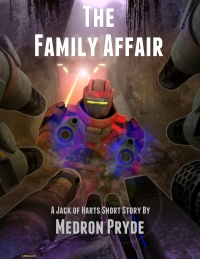The Republic of Texas
Dyess Air Force Base’s B-21 Raiders did not fare well during the Second Great Depression. The hi-tech bombers could not maintain flight potential without constant maintenance by the very best technicians on the planet. They depleted their spare parts inventories within weeks, and could obtain none to replenish them, leaving Dyess AFB without its primary global strike ability. Fortunately for both Texas and America, one of their bomber squadrons had never been upgraded to the expensive Raider. They still operated the ancient but more dependable B-1B Lancer that had seen service in every major conflict of the Twenty First Century, and most of their crews remained. They were generational crews, working in their parents’ or grandparents’ craft, and they would never leave their plane to anybody else. When Texas looked for a first strike option for use against the drug cartels, Dyess AFB sent the Lancers in to clear a path for the ground forces. To say they were devastating would be to underutilize a perfectly good adjective.
 The Martian Affair on Amazon
The Martian Affair on Amazon Forge of War on Amazon
Forge of War on Amazon The Audacious Affair on Amazon
The Audacious Affair on Amazon Angel Flight on Amazon
Angel Flight on Amazon Angel Strike on Amazon
Angel Strike on Amazon Angel War on Amazon
Angel War on Amazon The Family Affair on Amazon
The Family Affair on Amazon The Thunderbird Affair on Amazon
The Thunderbird Affair on Amazon Wolfenheim Rising on Amazon
Wolfenheim Rising on Amazon Wolfenheim Emergent on Amazon
Wolfenheim Emergent on Amazon The Gemini Affair on Amazon
The Gemini Affair on Amazon
Discussion ¬